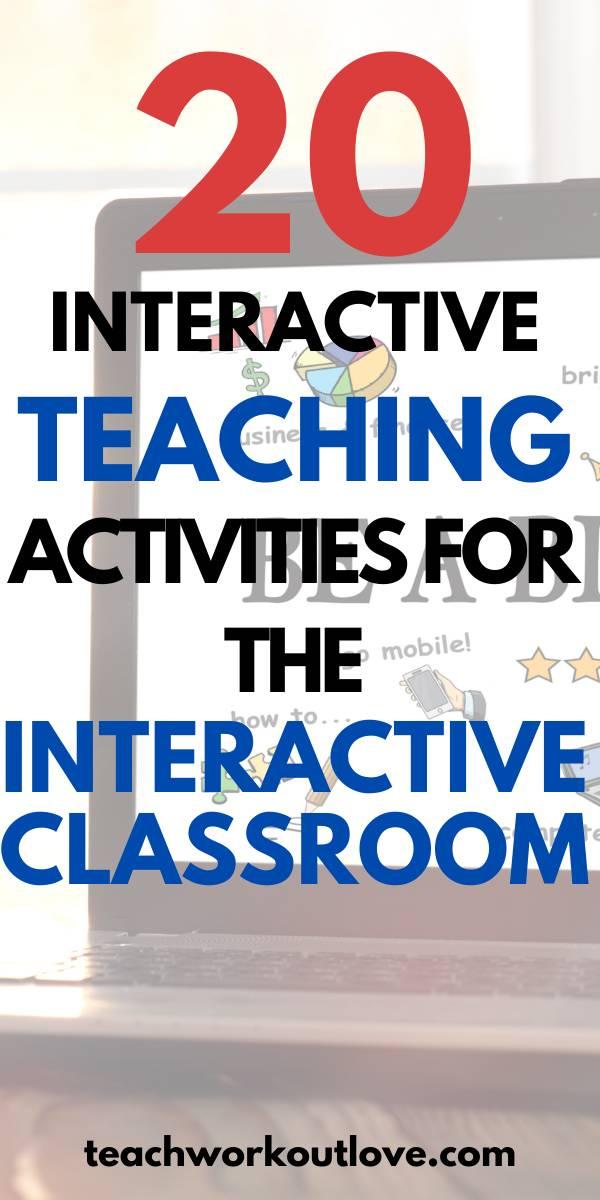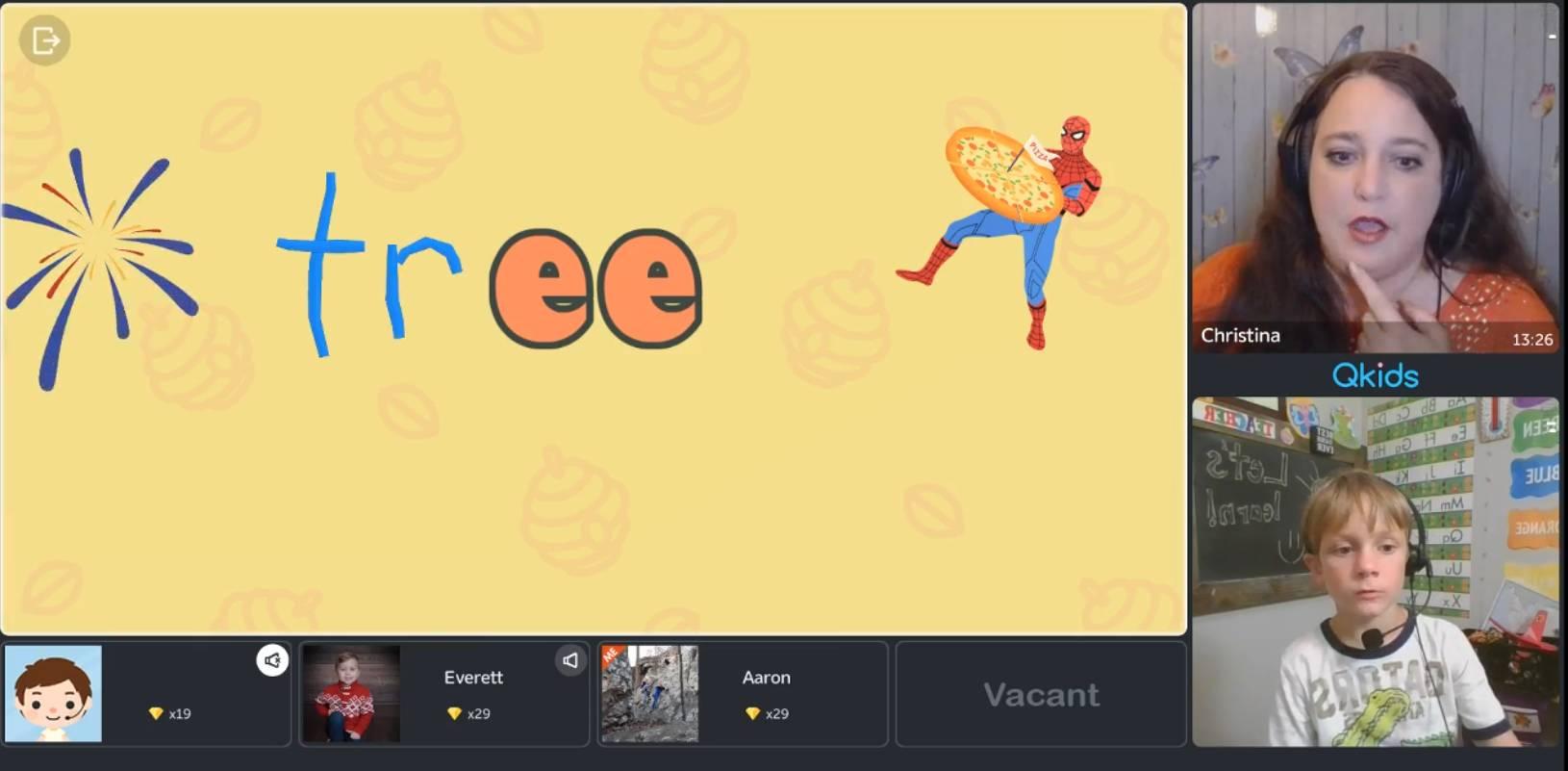Interactive Teaching is the formal term for the educational approach established at Waikato University as part of the Learning in Science Project in the 1980s.
Interactive teaching is the practice of engaging students in the educational process by encouraging them to involve their own experiences and knowledge.
Regular teacher-student interaction, student-student interaction, the use of audio-visuals, and hands-on demonstrations are all examples of interactive teaching. The students are continuously encouraged to participate actively.
Here are the 20 most successful interactive teaching activities to engage your students.

1. Interactive Demonstrations
In the classroom, interactive demonstrations can be used to show how a concept, skill, or process is applied. The demonstration should not be passive; you should prepare and structure it so that students can reflect and examine the process.
Interactive demonstrations have several advantages, including innovative visuals of the material and the ability for students to test their own understanding by asking if they can predict the demo’s outcome. They are also a place where people may put their thoughts or concepts into practice.
2. Student-student interaction
Students’ conceptual understandings and reasoning abilities are improved by engaging in collaborative conversation and arguments. Set up a debate based on differing points of view in the day’s materials. Allow teams to prepare, and then pit them against a team representing the opposing side. Practice in using the discipline’s vocabulary and creating evidence-based reasoning in their arguments are among the benefits.
3. Game-based Learning and Online Learning
Game-based learning activities include improving students’ problem-solving and decision-making skills, encouraging critical reflection, and allowing students to appreciate ambiguity in circumstances through online games. With Q Kids Academy there are live qualified teachers with group classes of 1-4 students per teacher, learning many different things online. Some of the things they can learn are phonics, sight words, guided reading, math, and more!
Qkids creates an interactive learning environment with a variety of interactive learning games. Children love games because they do not feel like they are learning. With Q Kids Academy your children can have game-based learning. They also have a course that helps develop reading ability through carefully structured courses from phonics through to sight-words and finally guided reading. Want two classes to try for free? Click here!

4. Interactive Brainstorming
In most cases, interactive brainstorming is done in group discussions. The method can be used to generate innovative ideas and concepts. Students can learn to work together by brainstorming.
5. Buzz session
Participants are divided into session groups, each of which focuses on a certain topic. Every student in each group adds their thoughts and ideas. Encourage students in each group to talk and collaborate; everyone should learn from one another’s ideas and experiences.

6. Warm-up activity
Stand-up and sit-down is a very beneficial activity when students get bored. It’s pretty simple; all you have to do is ask the students to stand and sit. This is useful for getting students energized and motivated.
7. Think-pair-share
In this twist on think-pair-share, ask your class an open-ended question and ask them to come up with their best solution. After that, put the students in groups and have them come up with a solution. When two pairs team up, the foursome must complete the same task. Complete the task until half of the group has been set against the other. You can do this virtually also.
Try a Free Class!8. Real-time responses
Allow students to contribute their real-time reactions while watching a video, a mini-lecture, or another student’s presentation. This aids kids in recognizing patterns and considering alternative viewpoints. You can use the chat function of your conferencing program.

9. Speed hangout ideas
Allow students to cycle around your space, or through Zoom or Google Meet breakout rooms, presenting thoughts on a topic or their elevator pitch for a forthcoming project. Students’ presentation abilities and perspectives will improve as they share their learnings on many “speed hangouts.”
10. Writing activity
Make a free-writing exercise for your students. Give them a prompt, a time of 15 to 20 minutes, and tell them to write whatever they want on the subject. Then, if they’re comfortable, have them talk about their experience and share some of their writing.
11. Sketching
Try having your students sketch a picture that reflects what they have learned in class using sketching. It’s important to remember that it’s not about the quality of the art; it’s about how drawing encourages kids to picture their thinking and look at their learning in new ways. Live qualified teachers of Q Kid Academy use this activity for their classrooms.

12. Positive/Negative
Students work in teams to portray opposing emotional perspectives on a case study, or issue. Encourage them to connect with the case study and truly “experience” it. You will come up with some excellent solution ideas, and your students will develop amazing skills.
13. Talk about movies
Students work in groups to identify at least one way in which the filmmakers got it right and one way in which they got it wrong when using a subject or event presented in class. Consider films about historical events, geographical facts, renowned people’s biography, and so forth.
14. Role Play
Allow students to discuss the key points of the last lesson. Then, divide your students into two groups and assign them two roles each. One is a teacher, while the other is a student. The teacher’s task is to draw the important points, while the student’s job is to tick points off his list as they are mentioned and come up with two or three points that the teacher missed.
15. Share Results
Pair students to exchange their outcomes after an individual brainstorm or creative exercise. Then, ask for volunteers who thought their partner’s effort was particularly fascinating or noteworthy. Students are generally more inclined to openly share the work of their peers than their own. Of course, you may always urge them to share their goals.
16. Tag, you are the one
To begin the game, the teacher will say a word, and one student will begin talking about it. The teacher will then say stop at random, and the next student must make a story from the previous student’s last word. Students’ creativity will be boosted, and they will be more engaged.

17. Flashcards
Flashcards are a simple and quick activity to practice with your kid. You can write words or letters on the card Scramble them up and give a word to spell to your child. Your child is using several senses to make the concept stay by physically searching for the correct letters and placing them in a row to spell a word.
You can help them by spelling words out for them and having them just read them. They can move the letters individually to practice blending and finally read the word as a whole. This is a lot more enjoyable for children than reading a list of words written on paper or writing each word out individually.
Also, you can use flashcards to practice sight words. The Q Kids Academy uses flashcard games to teach them reading words. Here live qualified teacher uses systematic methods through courses from phonics.
18. Guess Who
You can play a Guess Who game in your classroom. For Kids use the fictional character or book characters you have learned about this year. To guess the term, each student moves around the room, asking “yes or no” questions to the other students.
19. Virtual Bingo
It’s possible to play virtual bingo! Send a virtual game board to each student. Then, using cards that represent anything you are working on, such as sight words, math concepts, and so on, call out the cards and have them mark them as they go. Allow the winners to talk about what they covered. To allow for more sharing, play several rounds.
Try a Free Class!20. Math Dice
In our classrooms, a set of dice is an absolute must. It’s best if the dice are large! You roll all three in this game. Add two of the dice, then subtract the third, using the numbers as tens. The person who shouts out the correct answer first wins!
Without a question, teaching is a difficult job, and remote learning has been a challenge for everyone. But with Q Kids Academy your children can learn with fun and games. They manage the group classes of 1-4 students per teacher. Your child can interact with other kids also. Many things your child can accomplish from guided reading and math to writing and speaking English with these creative classes.
Conclusion
Interactive teaching results in students being active in the classroom, using their own brains which results in long-term memory storage. It will improve students’ interest, knowledge, and team spirit.
The post 20 Interactive Teaching Activities for in the Interactive Classroom appeared first on Teach.Workout.Love.
